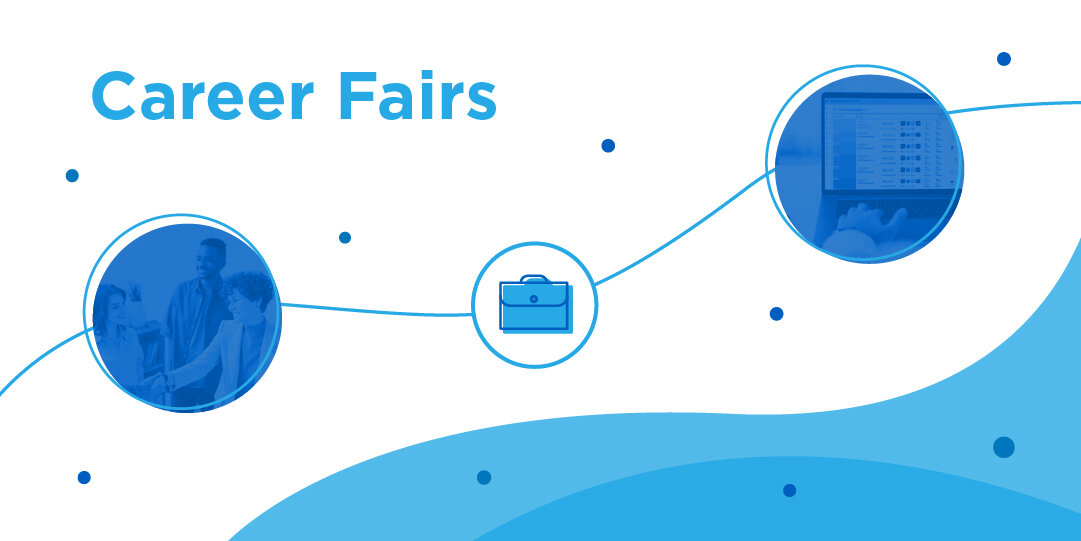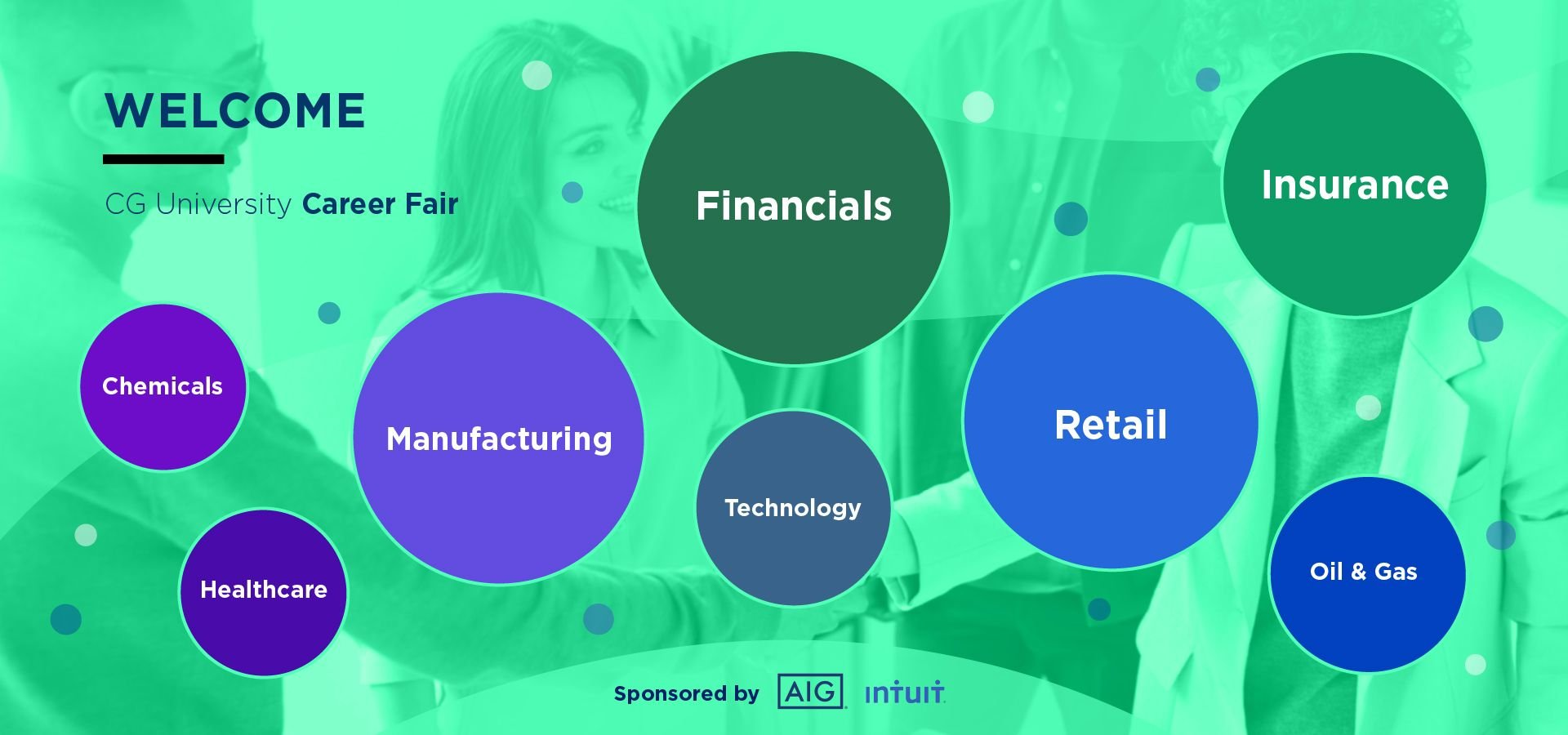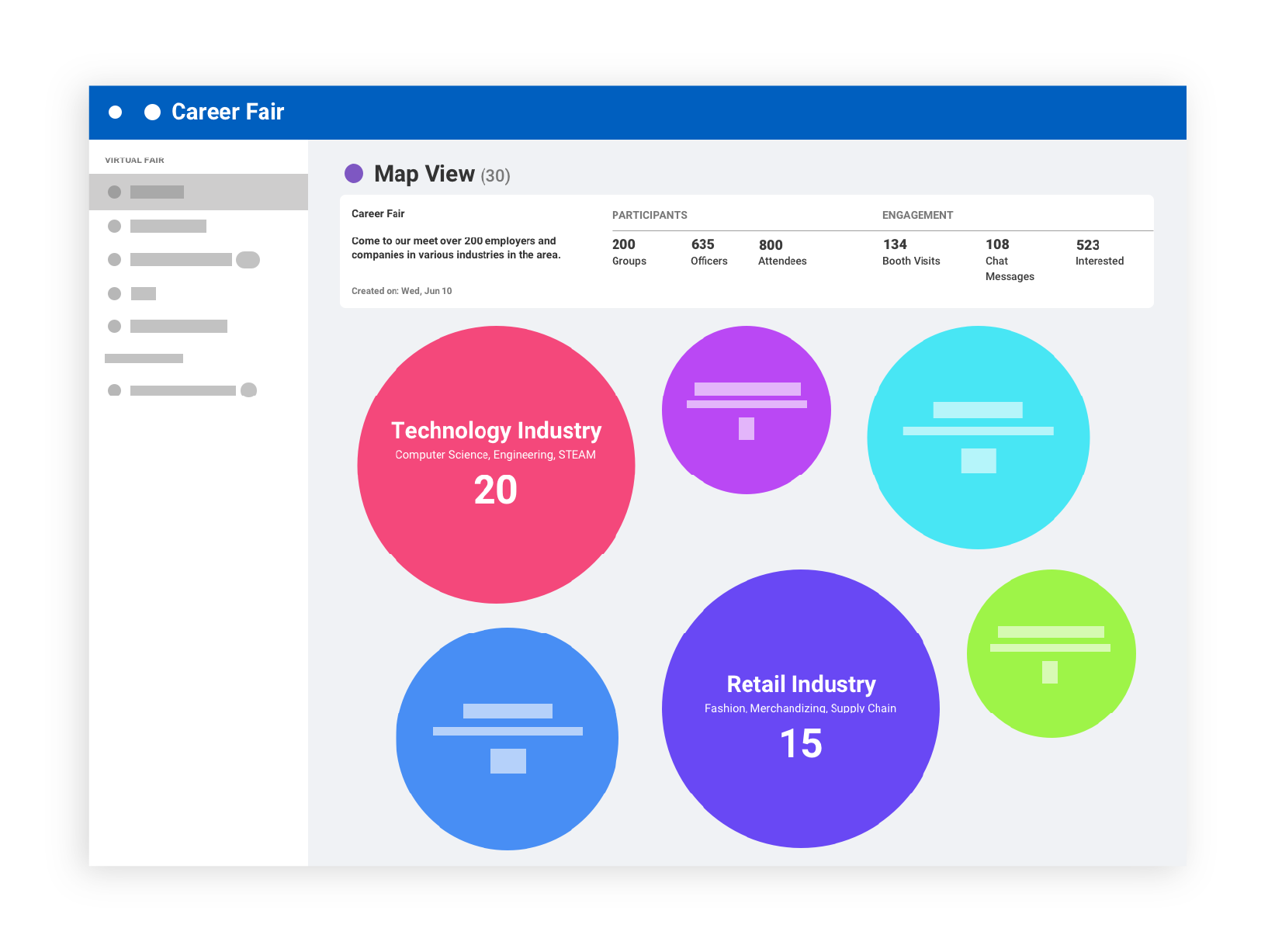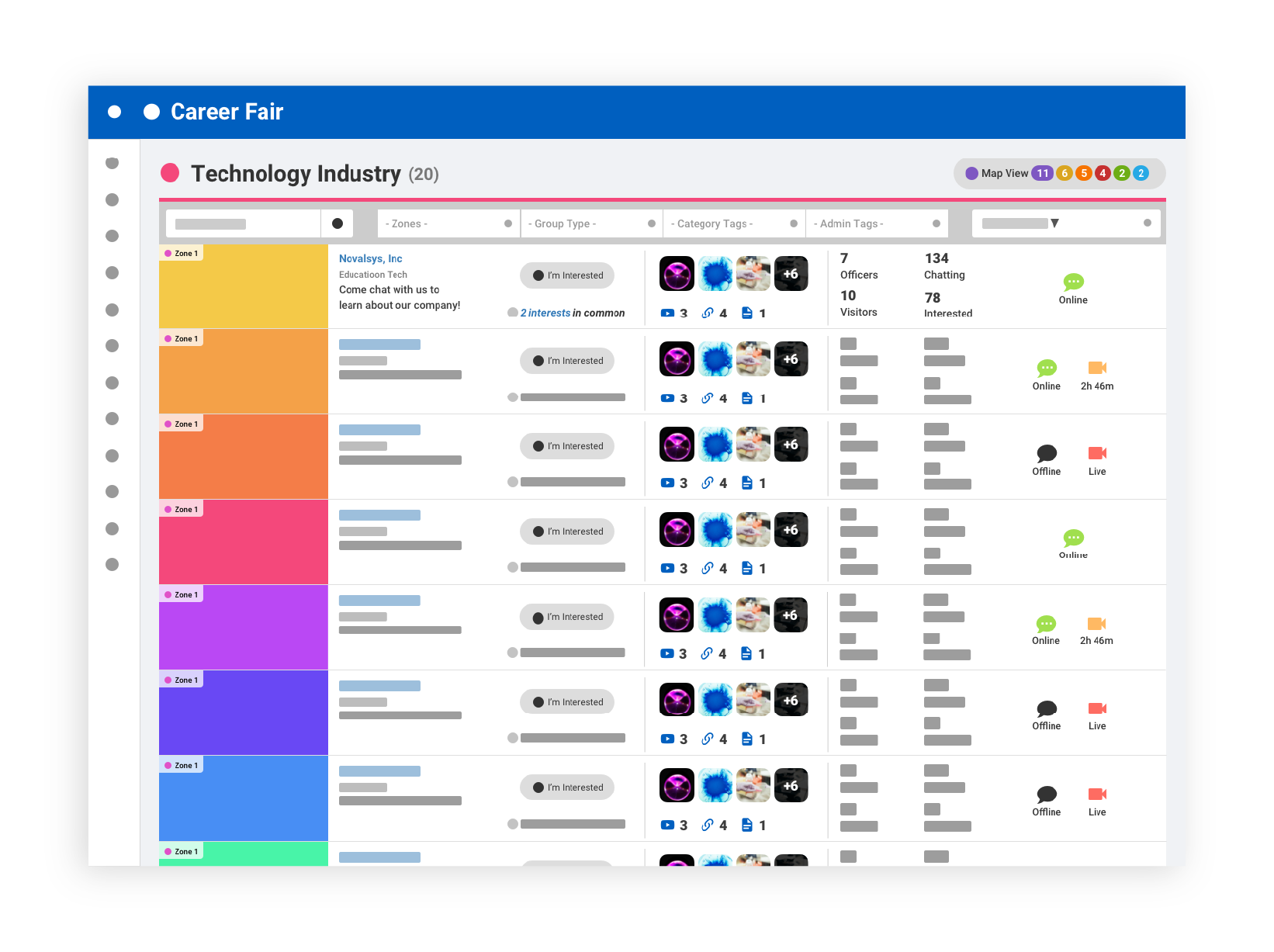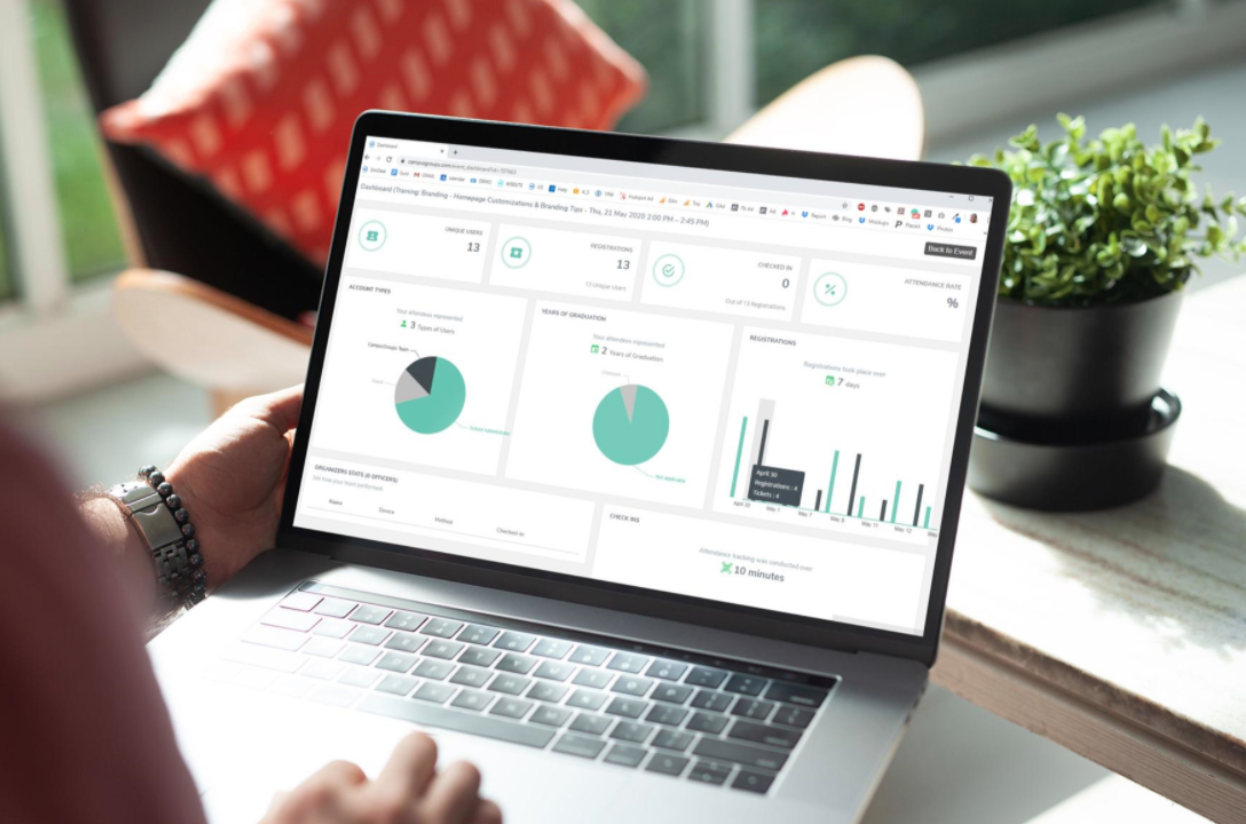Make Your 2021 Career Fair the Most Successful!
/Career fairs provide students with the chance to learn about new companies and make face-to-face connections with potential employers and recruiters. Launched in 2020, as an alternative to in-person fairs, virtual fairs are a product of the Covid-19 Pandemic. They have, however, changed the mindset of how career fairs should be managed and are now a mainstay of early talent recruiting.
The benefits of this next-generation student engagement experience are proven. Whether your 2021 career fair will be fully in-person or hybrid, having a virtual guide or app is instrumental to the process from both an efficiency and qualitative perspective. Outlined below are five key takeaways, demonstrating why leveraging an online career fair platform will maximize the success of your next career fair.
1. A more efficient process
Career fairs facilitate student-employer engagement and drive career center revenue. Leveraging a student engagement software to manage the event streamlines the process for higher education establishments, employers, students and alumni. Digitalizing the process from start to finish makes it more efficient. It also makes for a richer and more valuable experience.
Having an online platform to build a virtual career fair means that everything is centralized in an electronic database. Available on the web or via a mobile app, the virtual fair either replicates, supports or replaces the in-person career fair. The career center will use the portal to create the virtual event, market it across several communication channels, and pull key metrics and reports.
The more successful platforms include an interactive map, visually categorizing the different industries by zone. Students have access to the map and a complete directory of companies participating prior to and during the recruitment event. Some virtual career fair software enable event organizers to create a custom and branded fair map, which is more engaging.
Participants use the map to browse through the various industries and companies. Having the ability to review key information prior to the fair, means that students are better prepared the day of the event. Some career fair portals also provide the ability to book meetings ahead of time, which means that students do not have to wait in long lines the day of.
On the employer side, virtual booths are easy to build by uploading written documentation, job postings, photos, videos, links to social media and more. Recruiters also have the ability to view student profiles ahead of time and identify potential candidates of interest to engage with and meet the fair.
On-site, the virtual fair mobile app serves as a navigation, facts and questions tool. It enables more fluid and productive participation. Career services also often have a booth to include a FAQ’s section, host a resume editing center, and other services.
2. A better user experience
Virtual hiring events offer a next-generation experience for students and employers. They enable students, as job seekers, to easily explore the job market, browsing companies by sector. Students can also upload a user profile and resume. The more innovative systems also automatically match students to specific job listings based on their profile and enable interested candidates to apply directly online.
Certain platforms include the ability to network directly with employers. Students can therefore connect virtually with hiring recruiters and company representatives (via text chat, video conference, or video chat) ahead of time or book a meeting for the in-person fair. This increases student engagement prior to the fair.
The day of the fair, students can therefore be more strategic with their time and have more-informed conversations with potential employers. In addition, students who are unable to, or would prefer not to, attend the in-person event can still—on certain platforms—engage live with recruiters via a public group chat, a one-on-one chat, or video conference.
Employers use the virtual platform to showcase their company to talent. Virtual booths enable all companies, no matter the resources, to present fresh and engaging material. Placing companies with the most robust profiles at the top of the list is also a good way to incentivize employers to build out their booths.
The ability to review student profiles and resumes in advance, enables recruiters to invite potential candidates to visit their booth or apply for open positions. Some online systems also facilitate in-person interviews to be booked in advance, using an online calendaring system, or on the spot interviews over video.
A virtual career tool should not only try to mimic the in-person experience but include some fun features available virtually. Gamification is a great way to keep students engaged and reward them for engaging. Students that live chat with a group or visit 10 or more booths can for instance be eligible for a prize. Lastly, virtual scavenger hunts, games or online events can also make the experience more fun for participants.
3. Higher quality interactions
Virtual communication gives people the flexibility to choose the best way for them to interact. There are lots of options, including browsing through content online, engaging in live chats or video conferences, scheduling time to meet face-to-face, or having an impromptu conversation in-person.
The interactive virtual map, available prior to the event, enables students to browse content in their own time. This enables participants to have higher quality conversations or interviews. For employers, having the ability to download the list of students who showed interest in their company by visiting their booth, chatting or submitting an application also makes for more qualitative and longer-lasting interactions.
Having the option to engage virtually, is a great way to maximize engagement. It caters to students worried about large on-campus interactions, encouraging those who may be intimidated by an in-person-only fair to attend. People who prefer this form of interaction are also more likely to engage.
Virtual networking events also give schools the ability to spread the fair over several days (or in some cases over the span of a month). While some schools are maxing out on the physical space on campus to host large fairs, a virtual environment has no such limitations. Giving participants the flexibility to attend when best suits them encourages a higher level of engagement. It also encourages students across time-zones to attend.
Another benefit is that companies can have active booths, displaying welcome videos and other resources, even when not available for live chat or video-conference. This enables recruiters to schedule times when they are live over several days to allow for busy schedules.
4. Easy tracking and reporting features
Virtual fair technology has made things easier for career services, who no longer need to chase down and digitalize paper trails. The online system to manage the career fair should facilitate the registration process and have powerful tracking and reporting tools. Event platforms that include an attendance tracking feature can track attendance electronically, via a QR code or click of a button.
Having everything digitalized and in one place, from start to finish, provides a large volume of data on each career fair. Reports on the booth and participant side help measure the success of a particular event and the return on investment. Available on a dashboard, in a report, or email, event stats should be customizable and easily be pulled by administrators.
Capturing this data on an ongoing basis also informs the planning of future fairs. This may also be a channel for survey officers to receive feedback from students, recruiters, employers and make tweaks to follow up events. Further, if you use the same student engagement platform to run your virtual career fair as to manage your student life, everything will be interconnected.
5. Real time metrics
Virtual fairs also enable the collection of real time metrics. The best platforms track and display key statistics in real time on an interactive dashboard. These include how many recruiters have scheduled meetings, how many students have visited a particular booth, which companies have received the most solicitations, and how many chats or conversations are taking place simultaneously. Prior to this technology, it was extremely difficult to get real-time metrics on a fair.
Participants also really love the excitement created by live metrics. In an in-person or hybrid setting, stats can be tracked (using QR codes to be scanned via the virtual fair app) and displayed in the conference hall and online. Employers and recruiters can then use this data after the fair to continue to communicate with students that visited their booth or showed interest in their company.
Feedback from virtual career fairs held last year shows that many students and companies preferred the virtual format. Participants loved the efficiency and flexibility the virtual environment offered. They also reported that live interactions, including chat or video-conferencing, were more qualitative as students had the opportunity to prepare in advance.
Whether your 2021 academic year will be fully in-person, or hybrid, virtual career fairs are here to stay. Higher education establishments nationwide will continue to leverage this technology as a way to maximize student engagement.
Interested in learning more about CampusGroups? Please contact us for a demo to see how our solution can help keep your community connected and engaged!
